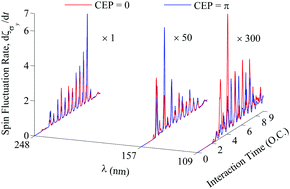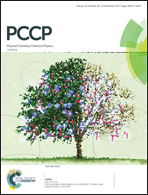Electron spin fluctuation in intense laser fields
Abstract
The effects of the orientation, wavelength and carrier–envelope phase of laser pulses on the spin fluctuation in HeH2+ and LiH3+ molecular ions in their bound electronic states, during their interactions with linearly polarized intense laser pulses, were investigated by solving numerically the time-dependent Dirac equation with the Foldy–Wouthuysen transformation. The results of this study showed that an increase in the wavelength of the laser pulse at a fixed intensity reduces the lifetime of the coherent spin states and increases the sensitivity of the spin vector to the applied laser field in both HeH2+ and LiH3+ species. This sensitivity also depends on the carrier–envelope phase of the laser pulse due to the asymmetry of these systems. Furthermore, the influence of spin–orbit coupling on the dynamics of the spin in the interaction of the highly charged atomic species, N6+, with ultra-intense laser pulses was investigated by considering different initial orbitals and spin polarizations. The results show that significantly different spin-forces are induced when an interaction starts with two parallel and perpendicular polarized spin states with respect to the direction of the laser pulse propagation. Furthermore, spin–orbit coupling affects the quantization of the spin space and results in asymmetric spin fluctuation depending on the initial spin polarization state and the electron orbital momentum, which is induced by the electric field of the laser pulse.



 Please wait while we load your content...
Please wait while we load your content...